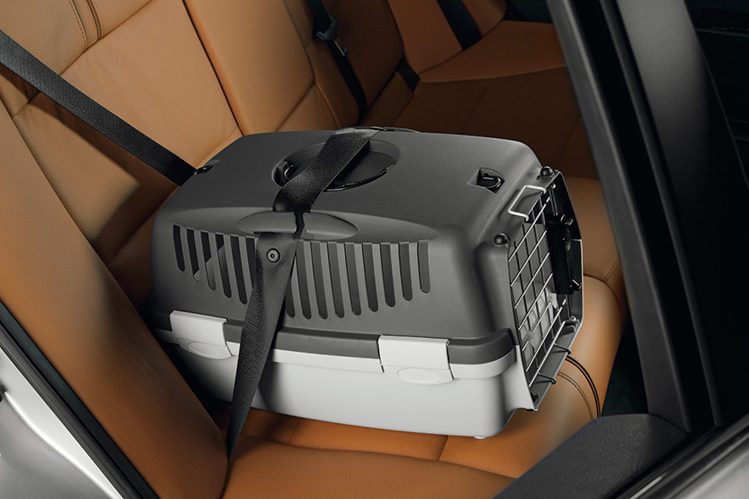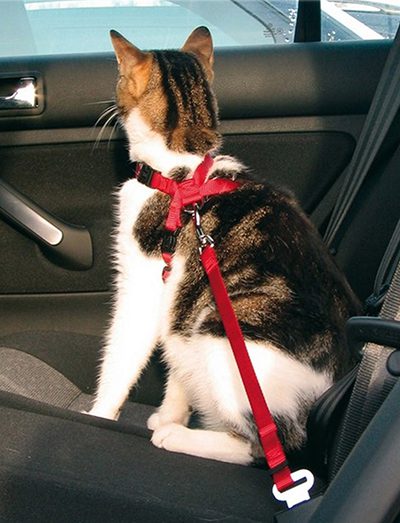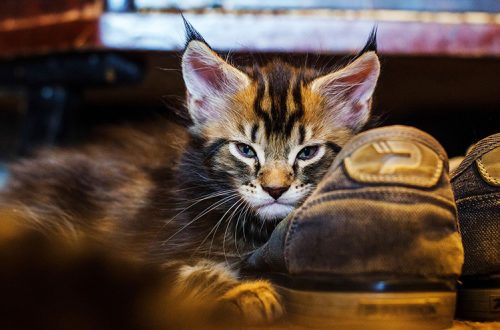
Transpò nan chat nan machin nan
A private car is the most convenient way to transport a cat from point A to point B. Firstly, this way you will significantly save money, and secondly, your pet will always be supervised (another thing is the luggage compartment of the aircraft). However, the transportation of cats in a car also provides for a number of rules that every owner (and part-time driver) should be aware of.
The main rule for transporting cats in a car is the comfort of both the pet itself and the driver and passengers. In no case should a cat impede driving and limit the driver’s view.
It is recommended to transport a pet in a special container for transportation. It can be placed under your feet in the area between the front and rear seats (positioning the carrier across traffic) or, preferably, fixed with a seat belt in the back seat of the car.

Your cat will be easier to transport if he smells his scent in the car. You can place your pet’s bed in the container or on the back seat of the car (if the cat is transported without a container).
If the cat does not tolerate transportation in a container, there is an option to fix it in the back seat with a harness (securely tied to the seat). This option is best used as a last resort if the cat, for example, is terribly afraid of containers and bags. When transporting a cat in this way, it is advisable to use a special cover or hammock for transporting animals in a car, otherwise the material of your seats may suffer from sharp claws or be richly decorated with cat hair.
 Ideally, the cat should be accompanied by a passenger who can take the back seat next to the cat. This will help to monitor the condition of the pet, control its behavior, soothe, stroke, feed and water. The presence of a familiar person will greatly facilitate the move and reduce stress levels for the pet.
Ideally, the cat should be accompanied by a passenger who can take the back seat next to the cat. This will help to monitor the condition of the pet, control its behavior, soothe, stroke, feed and water. The presence of a familiar person will greatly facilitate the move and reduce stress levels for the pet.
If your trip lasts more than 10 hours, do not forget about stops. Take your cat out of the car for short walks so she can get some air and go to the bathroom in peace.
During the trip, in no case do not hold the cat in your arms. You can be confident in your abilities, however, any cat will break out of even the strongest hands, if it really wants to. Think for yourself what the uncontrolled behavior of a frightened cat in a car can turn into. She can scratch passengers, jump on the driver or on the glass. In a word, try not to allow this for your own safety.
Within our country, a cat can be transported in your own car without a veterinary passport and certificates. However, it’s best to keep them to yourself. To cross the border, you will definitely need a veterinary passport for your pet with up-to-date vaccination records. Each country can put forward its own requirements for the transportation of pets. Be sure to check the requirements of the country you are going to visit.
Do not transport the cat in the front seat of the car, as this will distract the driver, or in the trunk: it will be too stuffy for the animal there and you will not be able to monitor its condition.
If you go on a trip during the hot season, carefully monitor the climate in the car. Moving is stressful for your cat in any case, and stuffiness, drafts and temperature changes will further complicate the situation. When leaving the car for a long time (especially during the hot months), be sure to take the cat with you. In the heat, the machine heats up quickly, and the pet may become ill.
Of course, moving brings trouble, but whatever your mood, try not to forget that a cat is not a soulless load, but a living being with its own experiences and fears. Be with her and try to make the journey as comfortable as possible. Have a good trip!





